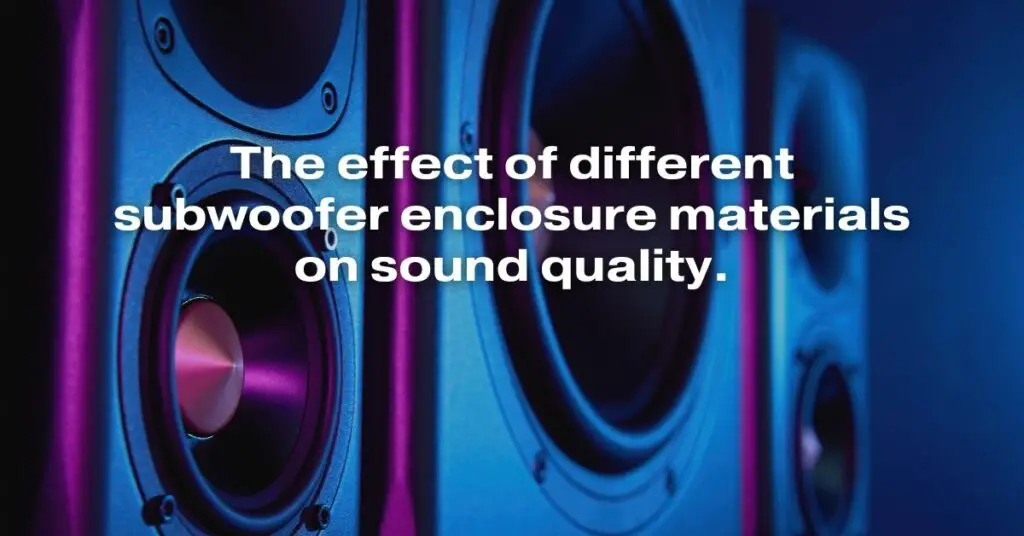Subwoofers are an essential component of any high-quality audio system, responsible for reproducing the low-frequency sounds that add depth and richness to music and movies. While the subwoofer driver itself plays a significant role in determining sound quality, the enclosure in which it is housed is equally important. The material used for the subwoofer enclosure can have a profound impact on the overall sound quality, affecting factors such as resonance, damping, and overall sonic signature.
MDF (Medium-Density Fiberboard)
MDF is the most common material used for subwoofer enclosures due to its combination of affordability, strength, and acoustic properties. Its dense and uniform structure effectively reduces unwanted resonances and vibrations, allowing the subwoofer to produce a clean and accurate bass response. MDF is also relatively easy to work with, making it a popular choice for DIY enthusiasts.
Plywood
Plywood is another popular choice for subwoofer enclosures, offering similar acoustic properties to MDF. It is slightly more expensive than MDF but is also more durable and resistant to moisture. Plywood is often used in high-end subwoofer enclosures due to its superior strength and stability.
Fiberglass
Fiberglass is a lightweight and durable material that is often used in car audio subwoofer enclosures. Its non-resonant properties make it ideal for applications where weight and space are limited. However, fiberglass enclosures can be more challenging to construct and may require specialized skills and tools.
Acrylic
Acrylic enclosures offer a unique aesthetic appeal, allowing for transparent or translucent designs that showcase the subwoofer driver. Acrylic is also a rigid and non-resonant material, contributing to a clean and accurate bass response. However, acrylic enclosures can be more expensive and prone to scratches.
Choosing the Right Material
The choice of subwoofer enclosure material depends on various factors, including budget, desired sound characteristics, and aesthetic preferences. For those seeking a balance of affordability, performance, and ease of construction, MDF is an excellent choice. Plywood offers similar acoustic properties with added durability, while fiberglass and acrylic provide lightweight and visually appealing alternatives.
In addition to the material itself, the construction of the enclosure plays a crucial role in sound quality. Proper bracing and internal damping can further reduce resonances and vibrations, ensuring that the subwoofer produces a tight and controlled bass response.
Experimentation and personal preference ultimately guide the choice of subwoofer enclosure material. By understanding the acoustic properties of different materials and considering individual needs and preferences, audiophiles can create a subwoofer enclosure that delivers the desired sound quality and complements their audio system.


